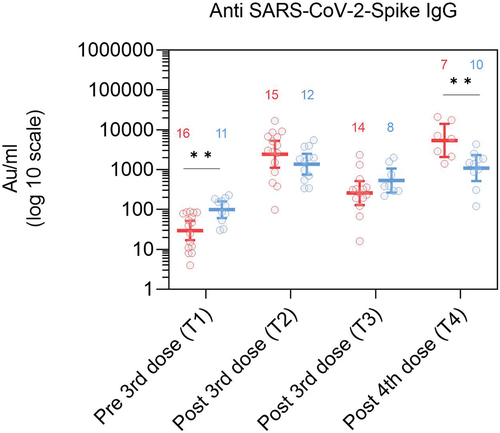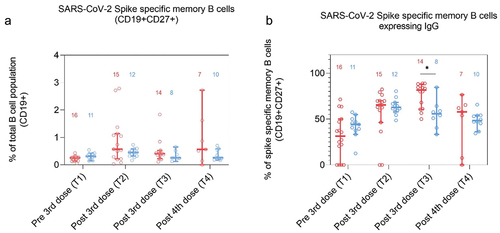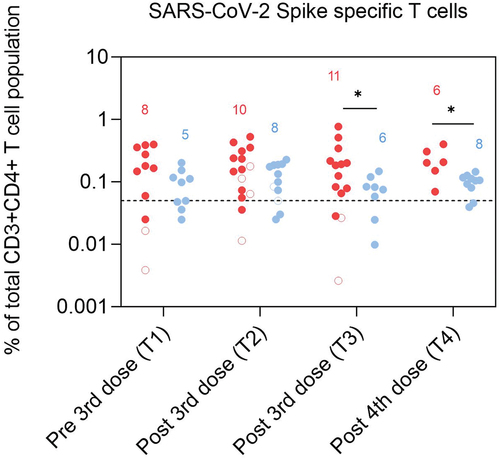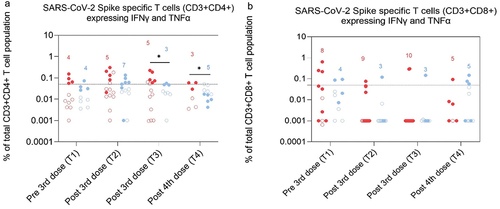Figures & data
Table 1. Demographic and clinical characteristics of participants.
Table 2. Number of vaccinations and specimen contributions of study participants. *At T1 eleven and nine samples were collected from PoD and controls for T cell evaluation respectively and at T4 six samples were collected from PoD. PoD=Patients on dialysis.
Figure 2. Anti SARS-CoV-2-Spike IgG levels in serum of dialysis patients (red) and controls (blue) at T1 (1–2 months pre 3rd dose), T2 (1–3 months post 3rd dose), T3 (4–5 months post 3rd dose) and T4 (2–4 months post 4th dose). Numbers of participants included are indicated in the graph.

Figure 3. Frequencies of SARS-CoV-2 Spike specific memory B cells in dialysis patients (red) and controls (blue) at T1 (1–2 months pre 3rd dose), T2 (1–3 months post 3rd dose), T3 (4–5 months post 3rd dose) and T4 (2–4 months post 4th dose). A: Spike specific memory B cell (CD19+CD27+) expressed as a proportion of the total B cell population (CD19+) and B: Spike specific memory B cells expressing IgG presented as a proportion of total spike specific CD19+CD27+ cells (B). Number of participants included are indicated in the graph.

Figure 4. Frequencies of SARS-CoV-2 Spike specific T cells (CD3+CD4+CD154+) in dialysis patients (red) and controls (blue) presented as a proportion of CD3+CD4+ cells at T1 (1–2 months pre 3rd dose), T2 (1–3 months post 3rd dose), T3 (4–5 months post 3rd dose) and T4 (2–4 months post 4th dose). Number of participants included in the statistical analysis are indicated in the graph.

Figure 5. Frequencies of SARS-CoV-2 Spike specific T cells from the CD3+CD4+ (A) and CD3+CD8+ (B) T cell population expressing both IFN∎ and TNF√ in dialysis patients (red) and controls (blue) at T1 (1–2 months pre 3rd dose), T2 (1–3 months post 3rd dose), T3 (4–5 months post 3rd dose) and T4 (2–4 months post 4th dose). Number of participants included in the statistical analysis are indicated in the graph.

Supplementary material_HVI_revised.docx
Download MS Word (1.8 MB)Data availability statement
The data that support the findings of this study are available from the corresponding author, N.T, upon reasonable request.

